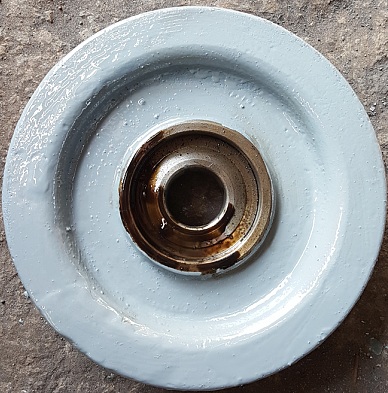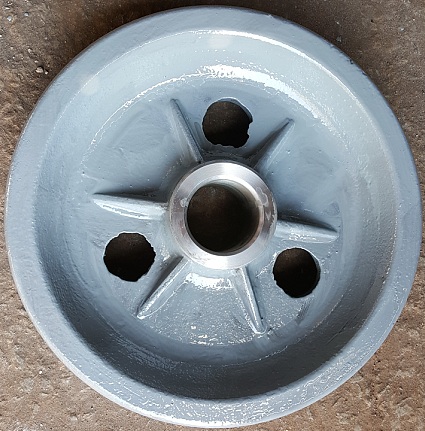Views: 0 Author: Site Editor Publish Time: 03-07-2025 Origin: Site








Pumps are essential machinery used in a variety of industries, from residential applications to complex industrial systems. If you're operating pumps in your business, you’ve likely asked yourself: "How long will my pump last?" The longevity of a pump depends on a range of factors, including the type of pump, its application, maintenance practices, and environmental conditions. Understanding these factors can help you maximize the lifespan of your pumps and ensure that your operations run smoothly.
In this article, we’ll dive into the factors that influence the lifespan of pumps, explore different pump types, and provide insights into maintaining your equipment for optimal performance. We'll also highlight how pump parts play a crucial role in ensuring long-lasting pump efficiency and reliability. You’ll also learn how Pump and Valve Parts are vital for keeping your systems in top condition and preventing unexpected failures.

The lifespan of a pump is not solely determined by its brand or initial quality. A variety of other elements play a crucial role in dictating how long a pump will function effectively.
Different pumps are designed for different purposes, and each has a unique lifespan. For instance, submersible pumps, often used for sewage or water drainage, may last anywhere from 2 to 15 years, depending on the model. Meanwhile, industrial pumps designed for heavy-duty tasks may have an even longer life, often exceeding 20 years if properly maintained.
The frequency with which a pump is used can significantly impact its longevity. Pumps that run constantly or under heavy load conditions will wear out more quickly compared to those that are used intermittently. For example, a residential sewage pump that operates every day may have a shorter lifespan than a well pump that is used less frequently.
Regular maintenance is one of the most important factors in extending the lifespan of your pump. Checking pump parts such as seals, bearings, and valves at regular intervals can prevent minor issues from becoming major failures. Additionally, implementing preventive measures like regular lubrication, cleaning, and inspection of Pump and Valve Parts helps ensure that your pump continues to function optimally.
Pumps that are exposed to harsh conditions, such as extreme temperatures, chemicals, or abrasive materials, tend to wear out faster. In these cases, selecting pumps with appropriate materials for the job and ensuring that all pump parts are compatible with the operating environment can make a significant difference in the pump’s longevity.
Another important factor in determining how long a pump will last is ensuring that it is the right size for the application. Overworking a pump that is too small for the job can result in early failure. Similarly, improper installation or poor alignment can lead to undue stress on the pump, shortening its useful life. Working with professionals to ensure correct sizing and installation of your Pump and Valve Parts can help avoid these issues.
Now that we understand the factors that contribute to a pump’s longevity, let’s look at the average lifespan of various pump types. This can serve as a general guide for planning your equipment's maintenance schedules and replacements.
| Pump Type | Average Lifespan |
|---|---|
| Submersible Pond Pump | 1-2 years |
| Sewage Pump (Residential) | 5-7 years |
| Grinder Pump (Residential) | 2-3 years |
| Effluent Pump (Residential) | 6-10 years |
| Well Pump (Residential) | 10-15 years |
| Jet Pumps | 5-15 years |
| Centrifugal End Suction Pumps | 5-10 years |
These figures give a general guideline for pump lifespan, but remember that many pumps can last longer if they are well-maintained.

The longevity of your pump is not only determined by the pump’s quality but also by the condition of its pump parts. Well-maintained components such as Pump and Valve Parts play a pivotal role in ensuring that the pump operates efficiently over time.
Seals and Gaskets: These components prevent leaks and ensure that the pump operates under pressure. Over time, they may wear out, so regular inspection is crucial.
Bearings: Bearings allow the pump’s rotor to rotate smoothly. Worn-out bearings can cause excessive friction, which may lead to failure.
Valves: The Pump and Valve Parts regulate the flow of liquids in and out of the pump. If these are not functioning properly, the pump may experience backflow or pressure problems.
Impellers: These parts help in the movement of fluids through the pump. Clogged or worn-out impellers can cause inefficiency and eventual failure.
Regularly checking and replacing these critical components can prevent unexpected breakdowns and extend the lifespan of your pump.
Now that we’ve discussed how different factors affect a pump’s lifespan, let’s delve into practical tips for maintaining your pumps to ensure they last longer.
Inspecting pump parts at regular intervals helps identify early signs of wear or damage. A simple visual inspection can reveal issues such as leaks, corrosion, or wear and tear on seals, bearings, and impellers.
Keeping moving parts well-lubricated is essential for reducing friction and preventing damage. Regularly lubricating bearings and other moving parts helps maintain smooth operation and reduces the risk of premature failure.
Debris can accumulate inside the pump, especially in pumps used in dirty or high-viscosity applications. Cleaning your pump and its components ensures that they remain free from blockages and perform efficiently.
Following the manufacturer's guidelines for preventive maintenance is one of the best ways to extend the life of your pump. Regular maintenance schedules, including checking pump parts and performing necessary replacements, help you avoid unexpected breakdowns.
Over time, certain Pump and Valve Parts will wear out and need to be replaced. Upgrading or replacing these components with high-quality alternatives can improve the performance and lifespan of your pump.
In conclusion, the lifespan of a pump depends on several factors, including its type, application, maintenance, and operating environment. By understanding these factors and ensuring that pump parts are well-maintained, you can maximize the longevity of your pumps. Regular inspections, lubrication, and cleaning are key to extending the lifespan of your equipment. Moreover, ensuring the proper functioning of Pump and Valve Parts is crucial for maintaining the efficiency and reliability of your pump system.
If you’re looking for high-quality pumps and pump parts, JOC MACHINERY CO., LTD. offers a wide range of solutions tailored to your needs. By choosing the right pump and maintaining it properly, you can ensure long-lasting, reliable performance for years to come.
A: Regular inspections, proper lubrication, cleaning, and timely replacement of pump parts are essential to extend the lifespan of your pump.
A: Pump and Valve Parts regulate the flow and pressure within the pump. If they are worn or damaged, it can lead to inefficient operation and premature failure.
A: The replacement frequency depends on the type of pump and the conditions it operates in. Regular maintenance and inspections can help determine when replacement is necessary.
A: Signs include unusual noises, leaks, reduced efficiency, or failure to operate at full capacity. Regular inspections can help detect these issues early.
A: While reduced usage can extend the life of a pump, regular operation with proper maintenance is generally the key to longevity.
Our OEM Stainless Steel/Brass CNC Machining Mid-Size Pneumatic Valve Body is engineered for precise flow control in pneumatic systems used across industrial automation, energy, and manufacturing sectors. Manufactured in Jiangsu, China, this valve body is available in premium stainless steel or brass to suit different environmental and performance requirements. With ±0.05 mm tolerance, every component meets stringent quality standards for durability and operational reliability.
The CB310 Custom Slewing Drive is engineered for solar power tracking systems and other industrial applications that require smooth, precise rotational control. Designed and manufactured in Jiangsu, China, this slewing drive integrates a single-row cross roller bearing for maximum stability, and is compatible with either DC motors or hydraulic motors, depending on your project requirements. With diameters ranging from 200 mm to 4000 mm, this drive is suitable for a wide range of solar panel arrays and mechanical systems.
Add: 20/FL., 26 North Zhongshan Road, Nanjing, Jiangsu, China
Tel: 0086-25-83317070
Fax: 0086-25-83303377
E-mail: peter@jocmachinery.com


